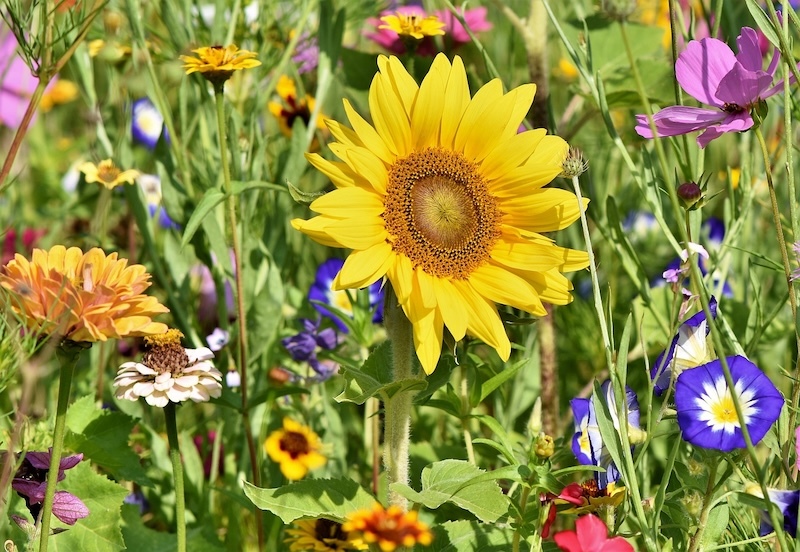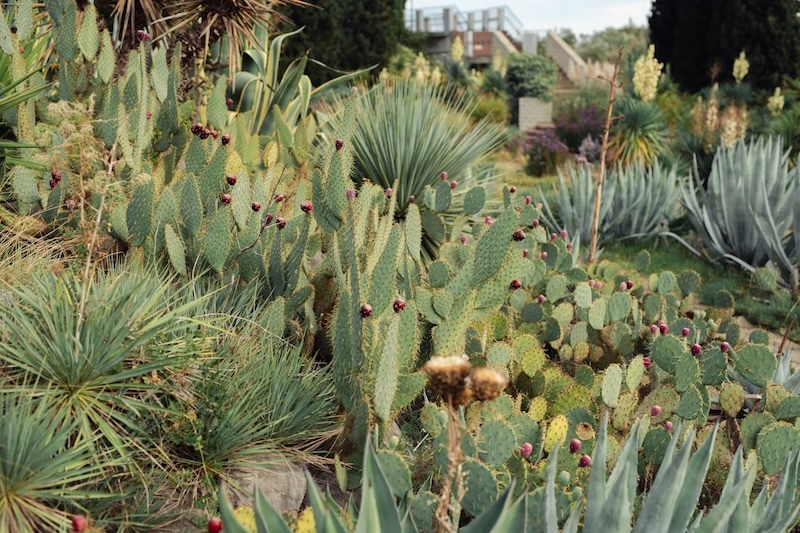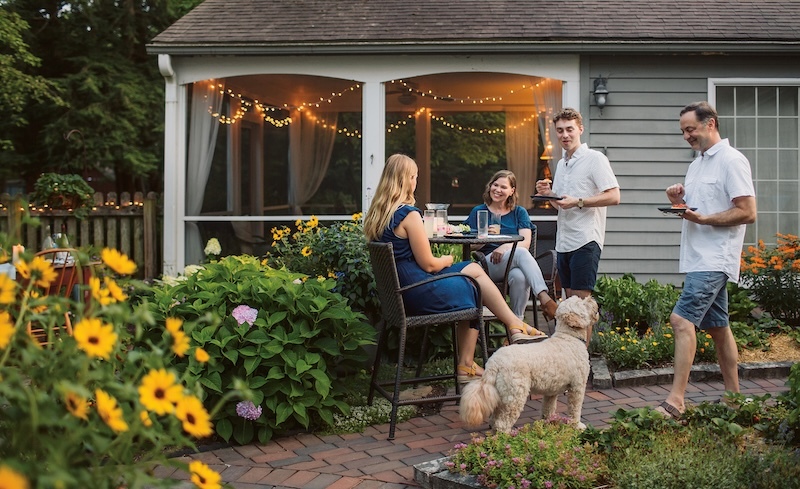Trends come and go fairly quickly in the fashion and design worlds, but in gardening, they are a bit more slow and steady. A new idea will emerge, be tested with the plodding practicalities of the gardener and fail or thrive. It is as simple as that. If you crave for a consumerist society that is a bit less hectic, take up gardening. We welcome you.
Test out a few yourself, but by all means, just grow something. Green up your space, whether it be a tiny cell of an apartment, a lovely little bungalow or standard suburban tract home.
1. Reimagining Lawns and Embracing Meadows
Many gardeners are replacing large, high-maintenance lawns with mixes of native and low-water plants, creating meadow-like spaces that support pollinators. These meadow installations offer movement, texture, and seasonal interest with minimal mowing or fertilizing. By downsizing or eliminating turf, gardeners reduce water usage and curb routine lawn care needs.

2. Relaxed, Naturalistic Planting
Formal lines and heavily pruned shrubs are giving way to gardens that welcome a touch of wildness. Leaving seed heads in place and allowing some leaf litter on the ground benefit insects and birds. This approach recognizes that slight imperfections—such as a stray cluster of weeds—often carry unexpected ecological value, making the garden more hospitable to local wildlife.
3. Prioritizing Natives and ‘Nativars’
Native plants remain in high demand for the way they foster biodiversity and adapt to local climates. At the same time, breeders continue developing ‘nativars’: improved varieties of native species (read about them here). This blend of ecology and selective breeding helps gardeners integrate wildlife-friendly plants while keeping gardens neat enough for smaller residential lots.
4. Water-Wise and Fire-Resilient Design
Persistent drought and changing weather patterns have led to gardens designed around water efficiency and fire resistance. Thick-leaved succulents, shrubs with leathery foliage, and permeable hardscaping are all on the rise, especially in regions prone to dry summers or wildfires. In wetter climates, gardeners are looking at better drainage methods and “sponge” approaches—planting to handle heavy rains without runoff.

5. Creating Spaces for Both People and Wildlife
Home gardeners continue to find creative ways to weave wildlife habitat into everyday living areas. Replacing a little-used lawn strip with pollinator-friendly blooms, installing bird-friendly shrubs near a seating area, or adding a small water feature in a corner are all simple strategies. These tactics ensure that gardens nurture both the homeowner’s sense of retreat and the needs of visiting creatures.
6. Resilient, Low-Input Plant Choices
Resilient plants—those that tolerate drought, heat, pests, or other stressors—are more popular than ever. Species such as ornamental grasses, coneflowers, salvia, and improved boxwood alternatives help gardeners maintain healthy plantings with reduced chemical inputs. Many new selections also show better resistance to diseases like boxwood blight or are bred to perform well in diverse or unpredictable climates.
7. A Renewed Love of Nostalgia
Roses, old-fashioned perennials, and heirloom varieties bring a comforting sense of history to modern gardens. Cottage-style beds full of time-honored plants like peonies or bearded iris blend the familiarity of traditional blooms with contemporary ideas about wildlife support. This nostalgic twist serves as a reminder that time-tested favorites can still play a role in sustainable, ecologically minded designs.

8. Containers and Portable Gardens
Renters and space-limited homeowners are planting in containers that move easily from one address to the next. Sturdy pots with herbs, compact fruit bushes, or pollinator flowers create flexible gardens on balconies, doorsteps, or small decks. These mobile plantings satisfy the craving for homegrown produce or seasonal color—even when there’s little or no ground to dig in.
9. Gardening for Mental Well-Being
More people see the garden as a restorative space rather than just a place to grow plants. Gardeners are carving out corners for reflection, adding simple water features, and using fragrant herbs for a calming effect. Whether it’s tending a few raised beds or sipping tea on a garden bench, the connection to nature serves as a welcome source of stress relief.

10. Seeking New Knowledge
With so many innovative methods appearing—from hydroponic Mason jars to community-scale seed swaps—home gardeners are eager for guidance. Workshops, hands-on events, and online courses offer practical instruction, and many local garden groups are ramping up outreach programs. Sharing tips and troubleshooting together fosters a sense of community and empowers gardeners to refine their skills.
These trends reflect a growing commitment to ecological awareness, personal well-being, and creative gardening solutions. As 2025 unfolds, expect even more emphasis on balancing beauty with a renewed sense of purpose in the garden.
Have you noticed any garden trends picking up steam lately?
